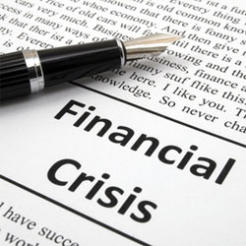Our economic woes are not over yet and charities must rethink investment strategies to survive, says Chris Wyllie.
Charities reliant upon investments to fund their operations have had the sort of thrilling ride they could have done without in the last ten years. Despite this sleepsapping volatility, the FTSE All-Share Index has scraped an annualised total return over the last ten years of just 1.6 per cent, insufficient to cover the cost of inflation.
The saving grace for many charities has been the fact that while equities have remained in the doldrums (if that is not putting it too kindly), gilts (government bonds) by contrast have had a wonderful run. The annualised rate of return from gilts over ten years has been 5.5 per cent. That is an amazing number for what is supposed to be a risk-free return. Many charities held large amounts of gilts not because they thought they would outperform equities in such spectacular fashion, but because they needed the income. Along the way they have enjoyed a spectacular free ride.
But is that free ride coming to an end? Will there be a crash landing? The cracks are beginning to appear. Last year, three out of four quarters for gilts were negative, and for the year as a whole the return was -1.2 per cent. The problem is that a near-20-year bull market in gilts has pushed down the income yield to the level that it does not provide much of a cushion to offset price falls when they occur, meaning the total return (combining capital and income) can quickly turn negative.
Unfortunately, there are some pretty good reasons to believe that further price falls could be on the cards. The elephant in the room is the colossal deficits being run by most of the major western economies. In the UK, the current government debt is equivalent to £23,000 for each and every adult. However alarming though that may sound, that is not the worry – it is the new debt being accumulated. Over the next few years, the UK government will have to issue £800bn of gilts. In so doing, they will have to compete with a number of other major governments of the world for that funding, not least the US. Increased supply meets limited demand – that normally spells lower prices.
Investors are also concerned about the risk of default, and higher inflation, both of which are bad for holders of debt on which the income yield is fixed. However, we think that underlying inflationary forces are weak, despite the spike we are seeing at the moment (and which may persist for a while yet). This is because the amount of money in the economy just isn’t growing much, a result of the banks continuing to be tight on net lending. Meanwhile, the UK is unlikely to default on its debt unless and until the interest rates it has to pay reach unsustainable levels. We are a way off that at the moment.
So, what are the big conclusions from all this? Charities have been glad of their gilt holdings over the last ten years or more. However, just as their income requirement led them to “accidentally” back the right horse over this time, they should now be wary of falling into an investment abyss through no fault of their own. In any event, the income yield on gilts, at less than 4 per cent, is no longer that attractive, particularly with inflation running where it is at the moment, and is only about 0.5 per cent higher than that available on equities (even though equity dividends can rise with inflation, unlike gilt coupons). Meanwhile, there is a distinct risk of gilts entering a bear market akin to that experienced by equity markets in the last decade, with prices falling markedly over a long period. Nevertheless, many charities, while recognising the attractions of equities after ten years of negative real returns, find it hard to stomach the volatility that comes with them, and the risk of further big falls if the economy stumbles into a double dip recession.
In order to successfully navigate the investment landscape charities will need to adopt a flexible approach, shifting between asset classes such as bonds and equities as they move through the cycle. It’s not easy, and requires a different mindset to the one which has characterised the last 25 years, which was rooted in the belief that you could just buy and hold your assets because in the end they would always go up. It requires active engagement with your investment manager, and the mutual understanding that risk should not be set in stone, but managed according to market conditions. However, it is a goal worth pursuing, because done well it means that you can have your cake and eat it – protecting capital in the bad times and capturing returns in the good times.
Chris Wyllie is partner and head of portfolio management at Iveagh Private Investment House









